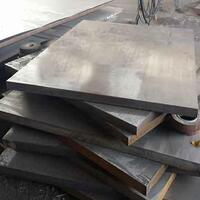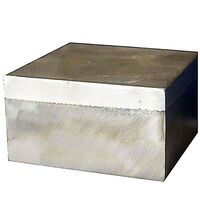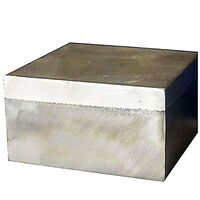1. Introduction
When you hear the term ‘metal clad,’ it might bring to mind sleek modern buildings with shimmering exteriors or rugged industrial structures built to last. But metal clad—also written as metalclad—refers to far more than just architectural design. At its core, the metal clad meaning describes a composite material made by bonding two or more different metals together to combine their best properties. This technique is used across construction, manufacturing, and even electrical engineering.

From metal clad siding on homes to aluminum clad pipe insulation in refineries, clad metals offer enhanced strength, corrosion resistance, conductivity, or visual appeal. Whether you’re researching a metal clad house, planning a metal clad roof, or simply curious about clad steel, this guide covers everything you need to know.
2. Understanding Clad Metals
The clad metal meaning is straightforward: it’s a layered metal product where a base metal is bonded—mechanically, metallurgically, or through electroplating—to another metal. This creates a material that leverages the advantages of both. For example, aluminum clad steel combines the light weight and corrosion resistance of aluminum with the strength of steel.
Common combinations include stainless clad aluminum, aluminum clad stainless steel, titanium clad, and copper nickel clad. These are used in everything from aerospace components to kitchenware. The bonding process can involve roll bonding, explosion bonding, or electroplating techniques like chromium electroplating or electroless nickel plating.
3. Metal Clad in Architecture and Construction
One of the most visible uses of metal clad materials is in building exteriors. A metal clad building often features a metal facade that’s both functional and stylish. Popular choices include corten steel facade panels, zinc facade systems, and corrugated steel facade designs.

Homeowners and architects increasingly choose metal clad wall systems for their durability and modern look. Options like corten steel siding, zinc metal siding, copper siding, and exterior corrugated metal siding offer unique textures and weathering characteristics. For instance, corten siding cost may be higher upfront, but its rust-like patina requires no painting and lasts decades.
Roofing is another major application. Metal clad roof systems such as colorbond standing seam, pac clad standing seam roof, and zinc clad roof provide excellent water resistance and longevity. Vertical standing seam metal siding and pac clad coping are also used for clean, minimalist aesthetics on dormers and edges—like a zinc clad dormer.
4. Common Types of Metal Clad Products
- Metal clad siding: Includes steel clad, aluminum clad sheet, and stainless steel metal plate panels used on homes and sheds.
- Metal clad electrical wire: Also known as metal clad wire or cu clad wire, it features a protective metal sheath for safety in commercial and industrial settings.
- Aluminum clad steel wire: Used in fencing, cables, and reinforcement due to its tensile strength and corrosion resistance.
- Metal clad insulation: Such as aluminum clad pipe insulation, which protects pipes while reflecting heat.
- Metal clad shed or steel clad building: Prefabricated structures using corrugated or standing seam panels for quick, durable assembly.
5. Industrial and Specialty Applications
Beyond buildings, clad metals are essential in heavy industry. Boiler plate steel, mild steel plate, and thick steel plate are often clad with corrosion-resistant alloys like Inconel 625 or stainless steel for use in chemical plants and power generation. Chrome carbide overlay plates protect machinery from abrasion.

Precision applications use specialty plates like 6061 T6 aluminum plate, 7075 T6 clad sheets, or 316 stainless steel plate for marine or medical environments. Even metal nameplates and brass plates for engraving rely on clad techniques for durability and finish.
Electrical and electronics sectors use metal clad PCBs and aluminum clad wire for thermal management. Meanwhile, alloy clad materials like 2024 T3 clad aluminum serve aerospace needs by balancing weight and strength.
6. Materials and Finishes
The range of base and cladding metals is vast. Common base metals include carbon steel plate, alloy steel plate, and aluminum 5052 sheet. Cladding layers might be zinc coated, nickel sulfamate plated, or finished with gold coating for conductivity.
Decorative and functional finishes include diamond plate steel (also called checker plate), perforated plate, and aluminum tread plate. These are used in transportation, flooring, and safety applications. Prices vary widely—steel plate price depends on thickness (e.g., 1/8 inch steel plate vs. 3/16 steel plate) and grade (e.g., ASTM A387 for pressure vessels).
7. Choosing the Right Metal Clad Type
Selecting the right metal clad type depends on your project’s needs. For a steel clad house in a coastal area, 316L stainless steel plate or aluminum clad steel may outperform standard steel. In roofing, pac clad HWP or pac clad column covers offer both protection and design flexibility.
For electrical work, ensure metal clad electrical wire meets local codes—especially in commercial buildings in states like Pennsylvania. Always verify compatibility: stainless clad aluminum behaves differently than aluminum clad stainless steel under stress or heat.
8. Conclusion
Metal clad is far more than a buzzword—it’s a versatile, high-performance solution across countless industries. Whether you’re designing a metal clad house with a corten steel facade, installing a metal clad roof with standing seam siding, or sourcing clad steel for industrial use, understanding the options ensures better performance, longevity, and value. With innovations in alloy clad technology and sustainable materials like recyclable zinc and aluminum, metal cladding continues to shape the future of design and engineering.
Our Website founded on October 17, 2012, is a high-tech enterprise committed to the research and development, production, processing, sales and technical services of ceramic relative materials such as What. Our products includes but not limited to Boron Carbide Ceramic Products, Boron Nitride Ceramic Products, Silicon Carbide Ceramic Products, Silicon Nitride Ceramic Products, Zirconium Dioxide Ceramic Products, etc. If you are interested, please feel free to contact us.
